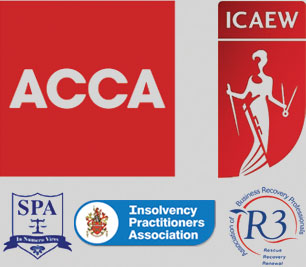
What is a Members’ Voluntary Liquidation?
A Members’ Voluntary Liquidation (MVL) is a formal liquidation process that enables shareholders to bring a solvent company to an end and unlock the proceeds cost-effectively. An MVL can either be used to bring an end to an entire company or alternatively, it can be implemented to close down an unwanted or non-performing subsidiary within a larger group of companies.
How does an MVL work?
MVLs are typically used when shareholders wish to retire or withdraw their investment from a company, and they provide a means of doing so in a tax-efficient manner. The process begins with the shareholders passing a resolution to wind up the company voluntarily. Once this decision has been made, a licensed insolvency practitioner (IP) must be appointed as liquidator.
The IP will then take control of the company’s affairs, manage its assets and liabilities, and ultimately distribute the proceeds of the liquidation to the shareholders. The process usually can take around 6-12 months to complete.
How do I start an MVL?
The first step is to appoint an Insolvency Practitioner (IP) to manage the process. They will work with you to assess your company’s financial situation and advise on the best course of action.
Once you have decided to proceed with an MVL, the IP will prepare a proposal for the shareholders to consider. This will include details of the proposed liquidation and how the proceeds will be distributed.
If the shareholders agree to the proposal, they will pass a resolution to wind up the company voluntarily.
What are the benefits of an MVL?
There are a number of key benefits to be gained from using an MVL to wind up a company, including:
– Tax efficiency: One of the main advantages of an MVL is that it can provide a more tax-efficient way of extracting value from a company than other methods such as selling the business or dissolving it. This is because shareholders are only taxed on the proceeds of the liquidation after all debts and liabilities have been paid, and they may also be eligible for certain reliefs and allowances.
– Flexibility: Another key benefit of an MVL is that it offers greater flexibility than other types of liquidation, such as compulsory liquidation. This is because the decision to wind up the company voluntarily is made by the shareholders, rather than being forced upon them by creditors or the courts.
Is an MVL right for my company?
– Control: An MVL also gives shareholders more control over the process, as they can choose when and how to bring the company to an end. This can be particularly useful in situations where the company is facing difficult trading conditions and the shareholders want to avoid any further financial losses.
What are the disadvantages of an MVL?
There are a few potential disadvantages to be aware of before deciding to go ahead with an MVL, including:
– Cost: One of the main drawbacks of an MVL is that it can be a relatively costly process, particularly if the company is large and complex. This is because the fees charged will be based on the size and complexity of the liquidation.
– Time: An MVL can also take some time to complete, typically taking around 6-12 months from start to finish. This may not be suitable for shareholders who need to access their capital quickly.
– Publicity: Another potential downside of an MVL is that it is a public process, which means that details of the liquidation will be available for anyone to see. This could be problematic for companies who want to keep their affairs private, or who are hoping to restart operations at a later date.
How long does an MVL take?
An MVL typically takes around 6-12 months to complete, from start to finish. This includes the time taken to prepare the proposal, pass the resolution, notify the Court, and liquidate the assets.
Once the liquidation is complete, the Insolvency Practitioner will distribute the proceeds to the shareholders in accordance with the agreed plan. They will also prepare a final report for the Court, which will be made available to the public.
If you are considering an MVL, it is important to seek professional advice to ensure that it is the best option for your company. An experienced insolvency practitioner will be able to assess your individual circumstances and advise you on the most appropriate course of action.
Alternatives to an MVL
If an MVL is not the right option for your company, there are a number of alternative methods of winding up a business, including:
– Selling the business: This may be a good option if you want to exit the business quickly and generate some cash. However, it can be difficult to find a buyer willing to pay the full value of the business, and you may also have to pay capital gains tax on any profits.
– Dissolving the company: This is a simple and quick way to bring a company to an end, but it can be difficult to recover any money owed to the business (also commonly referred to as striking off the company).
What does the Insolvency Practitioner do?
An Insolvency Practitioner (IP) is a professional who is authorised to carry out insolvency procedures. They will be appointed to manage the MVL process and oversee the liquidation of the company’s assets.
The IP will work with the directors and shareholders to ensure that the liquidation is carried out in a fair and transparent manner.
Once the liquidation is complete, the IP will distribute the proceeds to the shareholders in accordance with the agreed plan. They will also prepare a final report.


Follow Us!